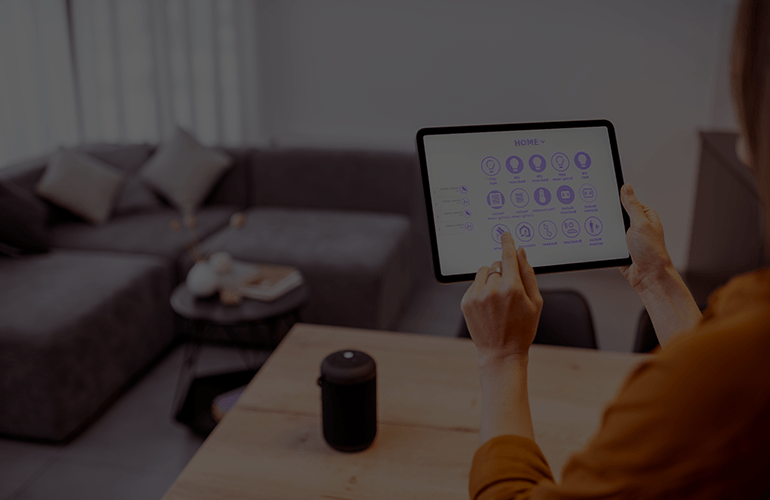
IoT testing: 4 ways to overcome challenges of digital transformation
“Okay, tech innovations lie at the center of my digital transformation.” But why isn’t it enough to become a leader?
Successful digital transformation is pretty much about cultural shifts that facilitate new ways of thinking, working, and problem-solving.
According to the latest researches, the majority of market players are transformation-driven while focusing on adopting technologies and creating new business models. Why does another half of respondents slow down digitalization programs?
They don’t. It’s just a range of issues that impede the digital transformation journey — the lack of change management, evolving customers’ needs, ineffective data handling, and more.
Let’s find out what helps pass digital transformation successfully and discover what role IoT-based initiatives and their timely testing play in addressing main challenges.
Is making bets on IoT a win?
While investing in the right technologies, companies strengthen competitive advantage embarking on a digital-first path.
In 2021, digital leaders increased technology spending to 55%. With that, they are 4X more likely than laggards to drive projects with technologies that provide new opportunities within the IoT presence at the helm.
What’s the buzz behind IoT?
- Reduced costs. IoT devices are interconnected, using sensors to sharply detect any minor drawback of the equipment preventing expensive repairs on machines.
- Enhanced workflow. While mobilizing corporate resources, including PCs, printers, Wi-Fi modems, and others, IoT optimizes the work environment.
- Better customer experience. Along with improving internal company processes, IoT contributes to effectively interacting with end users owing to automated chatbots and dedicated apps; using devices or checking their status from other locations; automating user scenarios that include a range of apps, etc.
- Improved mobility and agility. IoT revolution helps businesses set up virtual operational processes with minimal overhead while meeting the need for remote workers.
However, there are still some challenges when incorporating IoT-oriented initiatives into the digital transformation strategy. What are they? How to address them with IoT testing? Let’s take a closer look.
4 issues brought by IoT into digital transformation programs
By 2030, the global number of IoT devices is about to reach 25.44 billion.

Source: Statista
Of course, this triggers difficulties with their setup.
Issue #1. Fast communication and increased load
Fast-moving data lies at the core of interconnected IoT devices and substantially impacts device performance. IoT gadgets are prone to have issues with unreliable network hardware, slow Internet connection due to generating multiple connection conditions.
Issue #2. High vulnerability to cyberattacks
IoT is low-hanging fruit for cyber attackers within a considerable volume of personal data, as IoT devices are highly susceptible to medium- or high-severity cyber incidents. So, ensuring data privacy and safety is a must when developing and releasing IoT-oriented hardware and software.
Issue #3. Lots of IoT communications protocols
Interacting amid IoT devices and their complicated logic is all about communication protocols be it MQTT, CoAP, or XMPP. They need a corresponding test design as well as right tools and knowledge on how to use them to ensure the flawless functioning of IoT-based apps.
Issue #4. A range of IoT systems
Each IoT device has its hardware and relies on software to drive it. This provokes thousands of firmware and OSs that should interact smoothly. It’s nearly impossible to verify each combination, so creating a thorough testing strategy is becoming a must.
Rightly chosen tests help prevent these problems while ensuring that IoT apps respond correctly without losing data.
4 ways to address challenges with IoT testing
Before embarking on testing, QA specialists assess the current state of IoT software and hardware, delve into its architecture, and build a strategy to cover every feature of the tested product.
To ensure high-quality and secure software operation, the strategy should include the following QA activities.
Cross-platform testing
Encompassing a tremendous number of devices, IoT creates a similar amount of hardware and software mixes. Gathering data about use cases helps define the most popular subsets while performing complete testing against them.
Cross-platform QA optimizes testing time due to running smaller sanity tests on less common combinations. With that, it contributes to accelerating time to market and releasing software faster. Also, don’t miss integration testing helping ensure dozens, hundreds, and thousands of separately developed modules work together as expected.
Test automation
Within a globally interconnected web of IoT, manual checks are just feeble to cover everything. Here is where automated testing springs into action allowing for speeding up redundant tasks and optimizing test coverage.
Of course, to make it right, QA specialists are to be adept at IoT infrastructure and test automation itself delivering value with tools they use from day to day.
With that, preliminarily specifying the testing scope and QA efforts needed enables effective QA while covering the massive volume of protocols and APIs of IoT-based solutions.
Cybersecurity testing
It helps reinforce protection layers while securing end users. With a deep understanding of the IoT architecture, QA specialists detect safety threats and address them by implementing multi-layered security tests.
Moreover, complete security testing embraces ensuring compliance with the world standards, such as OWASP, HIPAA, PCI DSS, and others.
Performance testing
A vast number of devices generates different conditions to verify. Some cases require network virtualization to imitate real systems’ behavior while covering all critical scenarios.
Higher connectivity speed, a greater volume of data, new ways of interacting — all these provoke an adjusted look at performance testing tools and monitoring. Thus, performance QA specialists should keep up with the updates, understand IoT specifics, and apply this knowledge while testing IoT products.
Summing up
Along with 5G, AI, and other technologies, IoT is the fast-coming innovation that accelerates time to complete smart homes and cities.
It’s a huge boost for digital-first businesses, though, IoT-based solutions trigger challenges on the way to adopting them.
Software testing helps address them, ensure high quality of software, and meet desired business outcomes.
Feel free to get hold of a1qa experts and improve your IoT software quality by relying on QA support.


